Maybe the "state -owned farm" of the Liangzhu Kingdom?Look at what the ancient rice fields are like this 6700 years ago | Archeological China
Author:Cover news Time:2022.07.04
Cover news reporter Zhang Jie
People use food as the sky. Rice is a native and most distant national grain in China, which is of great significance to the survival of the Chinese nation. During the long historical period, rice brought food to Huaxia ancestors to survive, and provided a solid material foundation for maintaining life and civilization.
Among the many archeological projects, the archeology of the ancient rice fields in the prehistoric era would not be able to discover the country's heavy weapon as the ancient emperor's tomb or the sacrifice site archeological excavation, or the gold foil jade, and it was shocked when it was unearthed. However, it is of great significance in the exploration of Chinese civilization and is recognized by the archeological community.
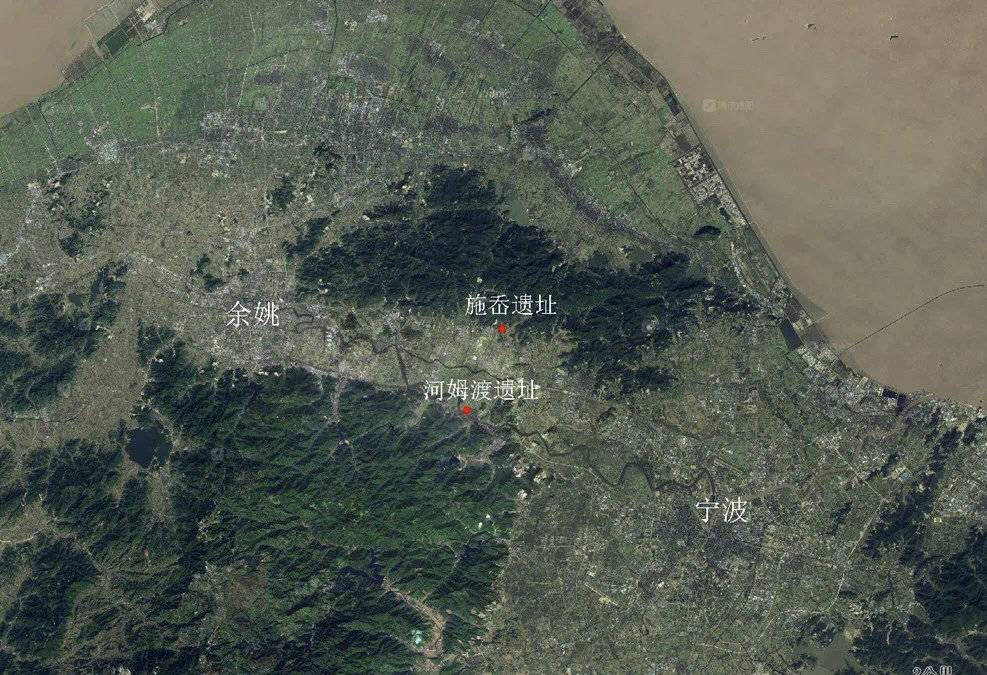
Shi Yan site location map
Shi Yan Gu Daitian
The same period as the Liangzhu Culture, which is more than 5,000 years of "empirical Chinese civilization"
In 2019, the UNESCO included the Zhejiang Liangzhu Ancient City site (one of the four central sites of the Chinese civilization exploration source project) into the World Heritage List. The reason for the selection is that it shows a regional formal state form based on developed rice agriculture, with obvious social differentiation and unified belief system. This marks the national science and technology research project that was officially launched in 2004- "China Civilization Source Project" that has entered a civilized society and has been recognized by the world for more than 5,000 years of civilization. The Liangzhu ancient city site has also become an empirical evidence that Chinese civilization can trace more than 5,000 years.
In January 2020, in Yuyao, Zhejiang, Zhejiang, a straight line from the "Liangzhu Ancient City" site from Hangzhou, is a place called Shi Yao. Following the rice fields of the Liangzhu in Hangzhou Yuhang Maoshan in 2009, I discovered this period here again. The rice fields, and large -scale, and self -contained road facilities and irrigation facilities, are the shape of the "well" shape, showing a very high level of rice. Some people speculate that this may be the "state -owned farm" of the Liangzhu Kingdom.
In the distant ancient times, how did our ancestors grow rice? What does rice field look like? What kind of scene is the wind blowing rice incense?
In January 2020, in Xiangyu Village, Yuyao, Ningbo, Ningbo, Zhejiang, there was a land on the west side of the natural village named Shi Yan, which will be planned and developed by relevant aspects. The southeast is about 400 meters from the Tianluo Mountain site, and the surface is about 1.4-4.2 meters above sea level. In accordance with the Cultural Relics Law, archeological explorations must be performed before the construction of the soil. As a result, the Zhejiang Provincial Institute of Cultural Relics and Archeology did the preliminary archeological exploration of the land. The terrain here is flat, where local farmers have cultivated rice for generations. It is about 7.5 kilometers away from the Hemudu site.
Like countless miracles buried at the time of time, Shi Yan's moment came like this. "When hitting Luoyang shovel, at a depth of 1-3 meters from the surface, it was found that there were no artificial relics on the two floors but containing a lot of corruption. The silt layer of the colonial. According to experience, these two layers should be the rice field layer. "On March 28, 2022, Wang Yonglei, the librarian of the Zhejiang Institute of Cultural Relics and Archeology and the archeological excavation site of Shi Yan site Recalling, "Why is it initially judged that it is rice fields? Because from 2008 to 2012, Mr. Sun Guoping of our Institute of Archaeological Institute once dug rice fields in the Tianluo Mountain site near Shihumi. It's not clear enough. I have worked with Teacher Sun for many years. Although I haven't dug rice fields directly, I know the soil of the rice fields. "
The excitement Wang Yonglei asked the unit to be a plant archeology, Zheng Yunfei, to analyze the large plant relics and silicon of the dug out of the soil, and confirmed that the two layers of accumulation were rice fields. After testing, the pile of rice fields contains the relics of rice ears, Ying shells, and rice fields with weeds. The results of the silicon plant analysis show that the density of the rice planting of rice in the pile of rice in rice fields is 1-2,000 grams/gram, which is much higher than the soil identified by the academic world. standard.
The exploration found that the accumulation of this prehistoric ancient rice field was about 80,000 square meters, and the total area of ancient rice fields around the excavated area reached about 900,000 square meters. In order to explore the development of prehistoric rice in the lower reaches of the Yangtze River and the evolution of farming methods, with the approval of the State Administration of Cultural Relics, from September 2020 to December 2021, Zhejiang Provincial Institute of Cultural Relics and Archeology, Ningbo Cultural Heritage Management Research Institute, Yuyao Henmudu City The site museum jointly conducted archeological excavations, and the total area of nearly 8,000 square meters was excavated.
In December 2020, an expert forum will be held. There are many reports of the media, and the response is great. Soon, this land was protected by the Yuyao Municipal Government and no longer infrastructure.
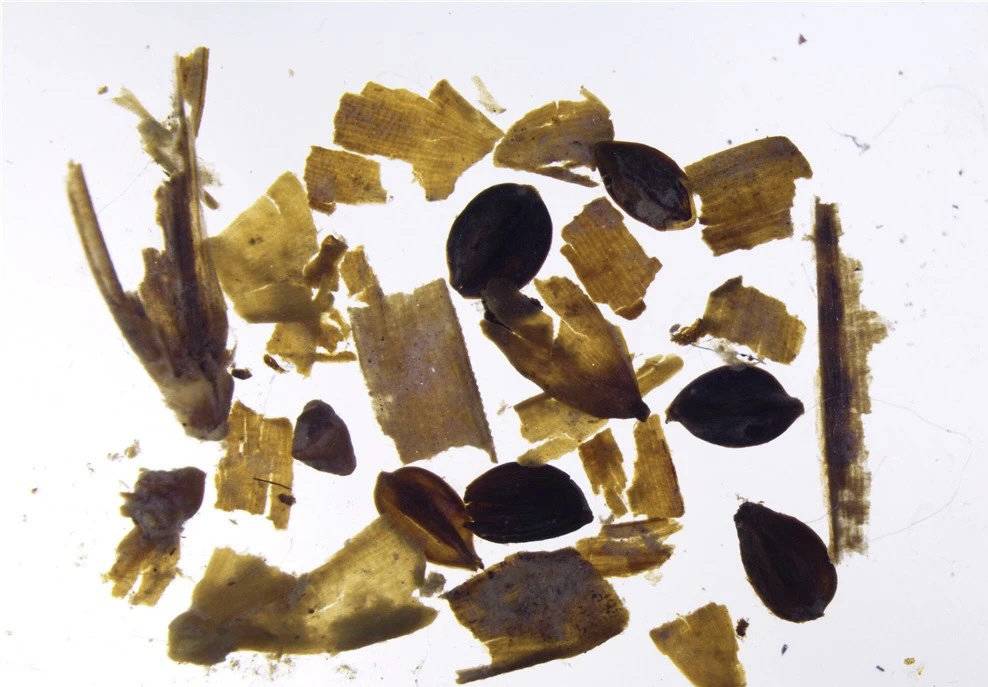
During the Liangzhu Culture period, the rice fields were screened, the rice shell, small ear shaft and weed seeds
At present, the world has the largest area
The earliest large -scale ancient rice fields
According to archeological analysis, it is confirmed that this is a three-phase large-scale rice field with a clear relationship, which clearly shows the early days of Hemudu culture (absolutely 4800-4500 BC), and the late period of Hemudu culture (absolutely 3700-3300 BC, 3700-3300 BC In the period of He Liangzhu Culture (Absolutely 3300-2600 BC), the field form and paddy field structure. The complete section of the excavation area shows that there are generally the interval between the peat layers and the seas stasis between the third phase of the ancient rice fields and the upper and lower sections. The interval between the accumulation of ancient rice fields and the stasis of nature shows that since 7000 years ago, many environmental events have occurred here, including changes similar to the vicissitudes of vicissitudes.
It is described in popular and dramatic languages: 6,000 years ago, a group of ancestors in the early days of Hemudu culture came here to flatten land and plant rice. They are cultivated with bones and wood. One day the sea level rose, and the rice fields were drowned into the sea. After the seawater retracted. Time has passed for a long time. After about a thousand years, the ancestors of the late period of Hemodu saw the land again, reorganized the old mountains and rivers, and began to plant rice. One day, the sea water came again, and the land was flooded again. Time has passed for a long time, about hundreds of years later, the ancestors of the Liangzhu period came to plant rice again. The vicissitudes of the sea, the original intention does not change.
In 2021, the long -seal veil was revealed by archeologists and presented in front of the world. The story of the ancestors attached to the paddy field in this land was told.
Liangzhu Culture During the Daita
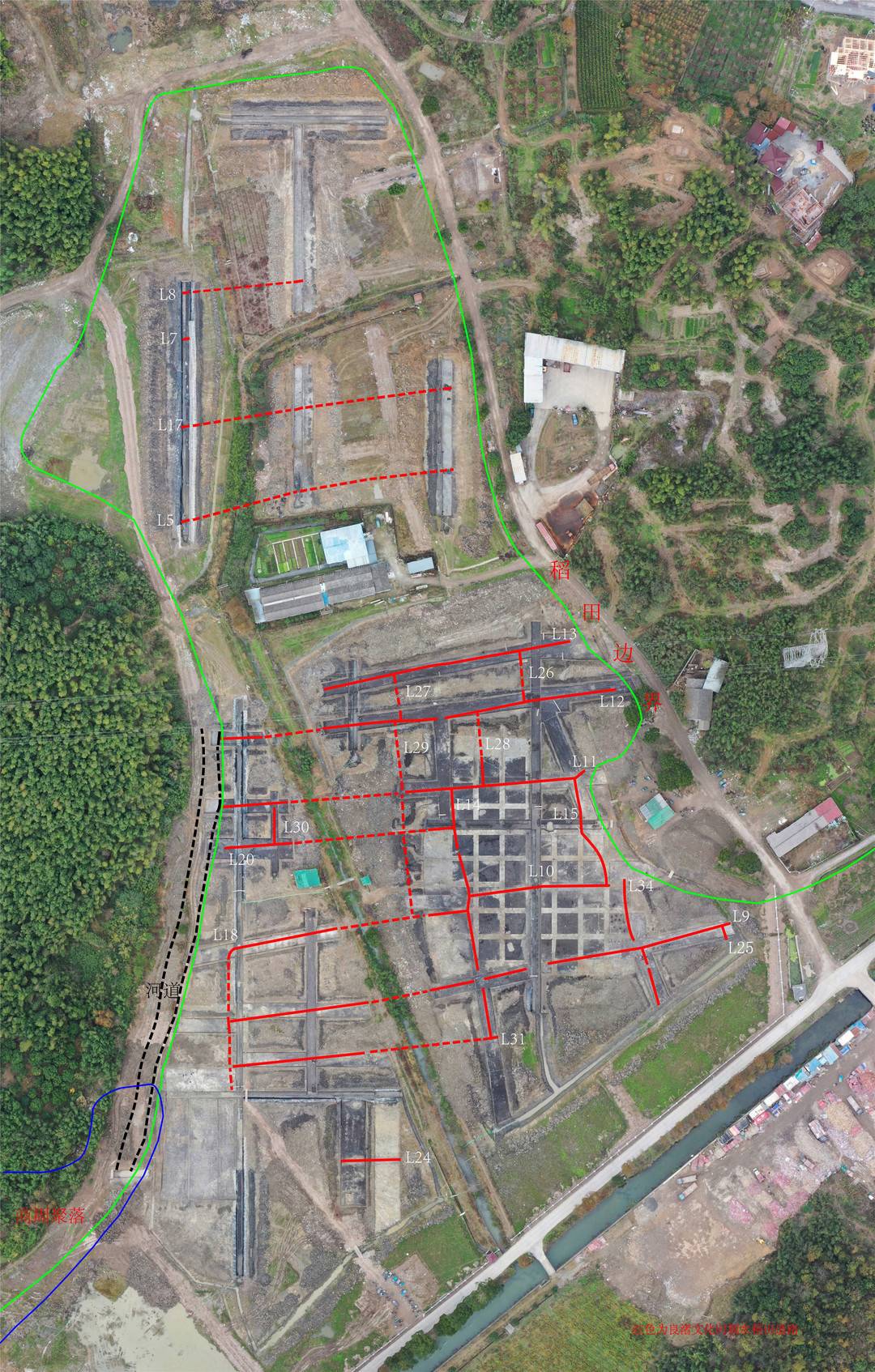
Hemu Culture Late Daita
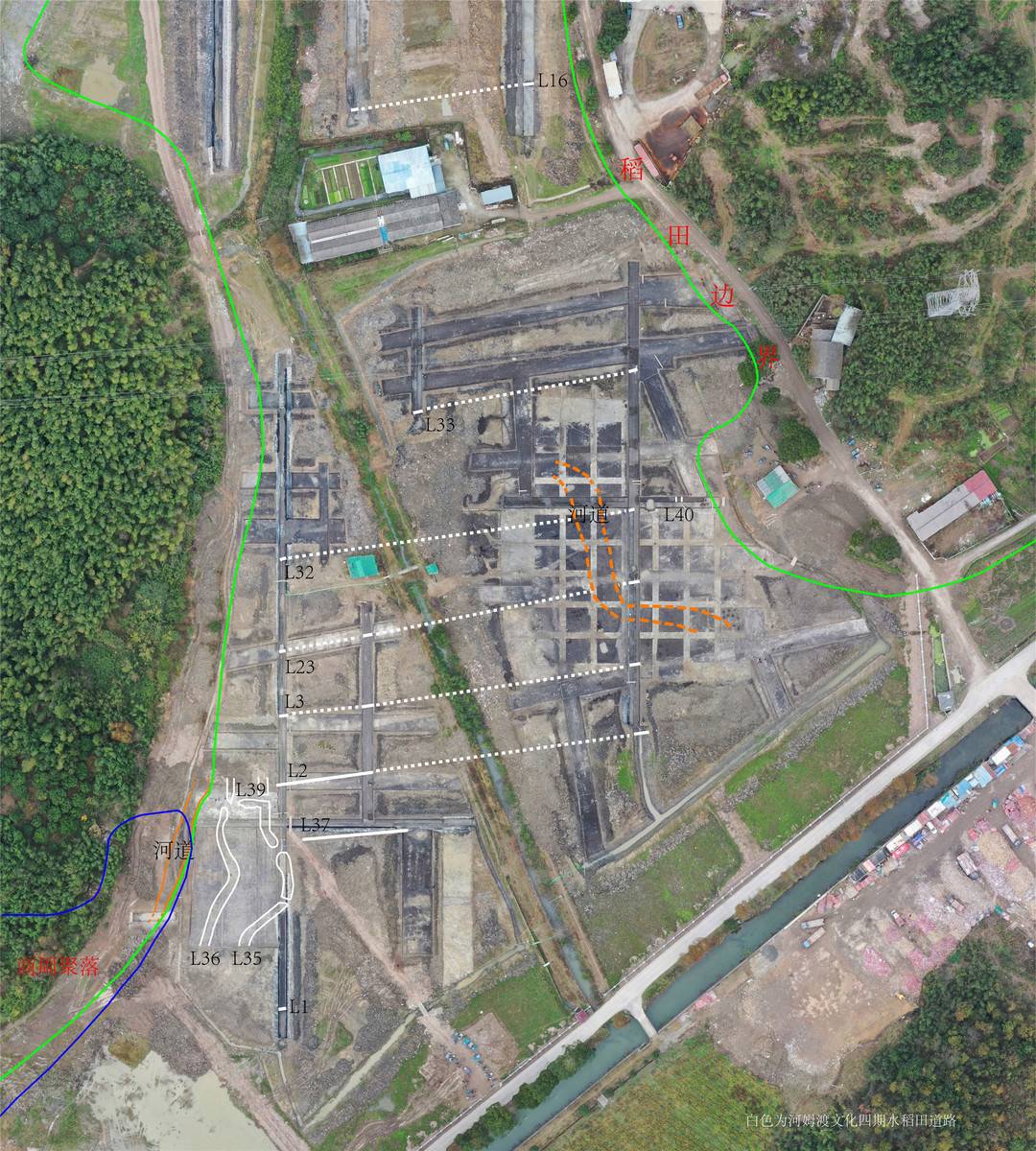
"In the past, archeology rarely discovered ancient rice fields. Even if there are, either the area is not large, or the evidence is not sufficient. For example, in Jiangsu, the pits -shaped rice fields around 6000 years have been discovered. The entire area of large -scale regulations can be traced back to the early days of Hemudu culture. The determination of early rice fields of Hamdu culture 6500 years ago is the biggest breakthrough in our excavation. "Wang Yonglei said," This is far, China and even the world in the world. The largest and earliest large -scale ancient rice fields are also the most complete and most evidence of the cultural series of rice farming relics. It is a major discovery of prehistoric archeology. Experts generally believe that it is a world -class discovery. "
At the end of February 2022, the Shi Yao Shi Ji site in Zhejiang and the Sanxingdui site sacrifice area of Guanghan Guanghan, Sichuan, and the Lhasa of Lhasa, Tibet, were shortlisted for the final evaluation of the Top Ten National Top Ten National Archaeological Discovery (20) in 2021, and were listed as "archeological China". Achievements. On the morning of March 30, at the "Top Ten Archaeological" final evaluation meeting in 2021, Wang Yonglei, the librarian of the Zhejiang Institute of Cultural Relics and Archeology and the head of archeological excavation of the Square site, gave a detailed introduction and statement of the Shi Yao Square site in Zhejiang.
Shihuan Site Southern Ancient Inari Road System
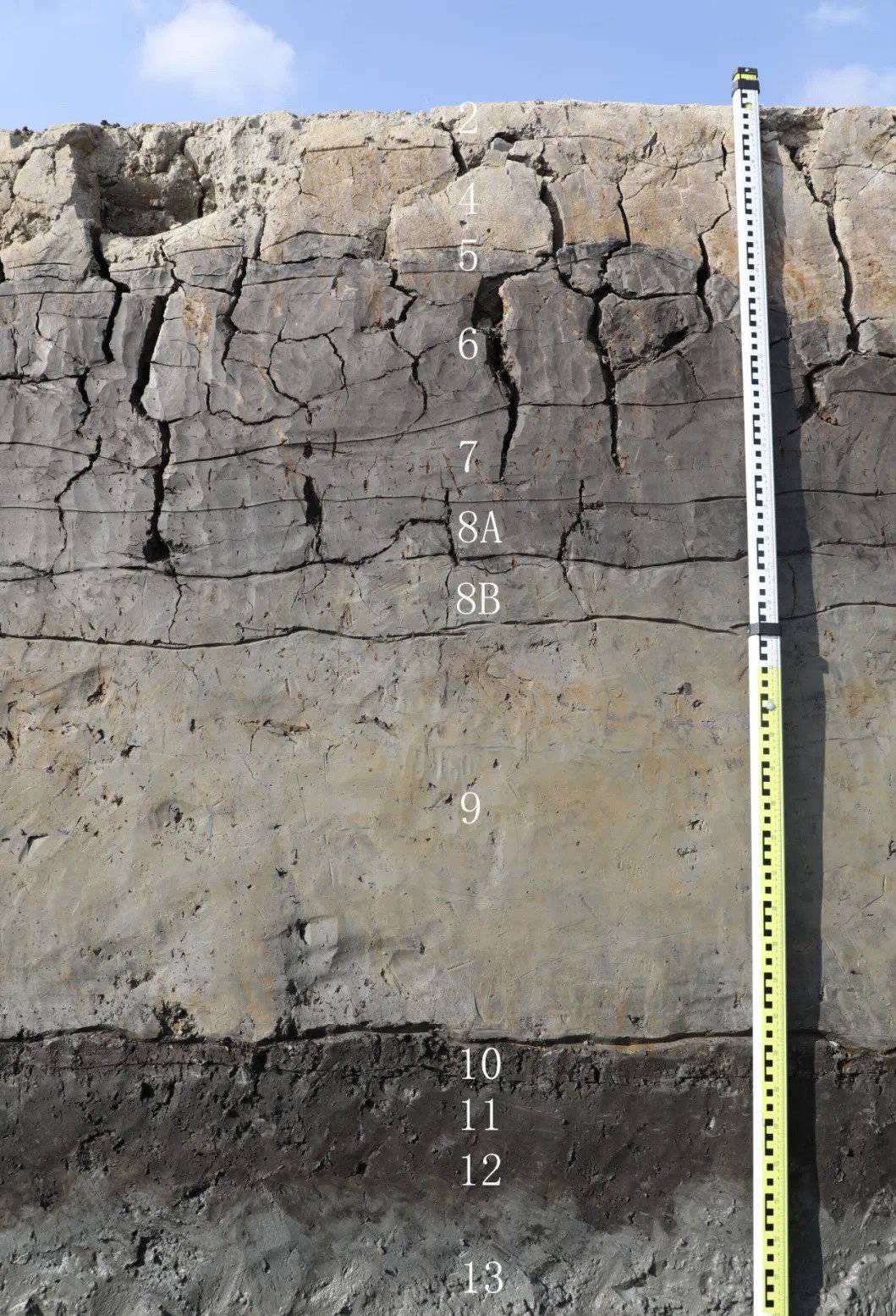
There are "wells" shape road networks and irrigation systems of "well"
Is it the "state -owned farm" of the Liangzhu Kingdom?
With the further deepening of research, more details of this ancient rice field have been discovered and the appearance is clearer.
The prehistoric groups worked hard to cultivate on this ancient rice field and continued to improve experience and technology.
On the ancient rice fields in Yuyao, Zhejiang, there were varying degrees of fields in the three periods of history: the first phase (early Hemu Culture) Daitian found 1 field 埂, and the second phase (the late Hemodu culture) found 12. Tian Yan, the third phase (Liangzhu Culture) Daitian clearly discovered 22 Tiansaki. The raised and horizontal raised fields form a large road network, and some areas that cannot be connected by Tianyu form an irrigation system.
On December 12, 2020, the Zhejiang Provincial Cultural Relics Bureau, the "Yuyao Shitian Site Ghota Archaeological Excavation Expert" jointly organized by the Zhejiang Provincial Cultural Relics Bureau, the Ningbo Institute of Cultural Relics and Archeology, Ningbo Cultural Heritage Management Research Institute, and Yuyao Humadu Site Museum jointly organized Held in Yuyao City. From the Chinese Academy of Sciences, Peking University, Shandong University, Zhejiang University, Nanjing Museum, Shanghai Museum, China Rice Institute, Hunan Provincial Institute of Cultural Relics and Archeology, Zhejiang Provincial Institute of Cultural Relics and Archeology, Ningbo Cultural Heritage Management Research Institute More than 40 experts and scholars in the museum attended the demonstration meeting.
Director Lin Liugen of the Nanjing Museum Institute of Archeology said that it was very shocking to see the excavation site of the ancient rice fields of Shi Yan, refreshing everyone's awareness of prehistoric rice agriculture, which is a huge academic achievement in the long -term accumulation process of Zhejiang Archeology. "I did not expect that there was a large area of ancient rice fields during the Songze period and even the Hemodu period. The rice field system was composed of the" well "shape road network and the irrigation system. On the one hand, it reflected technical management and administrative management on the other hand."
Liangzhu Culture, the edge of the rice fields and the stone ax and stone knife unearthed in the ancient river channel
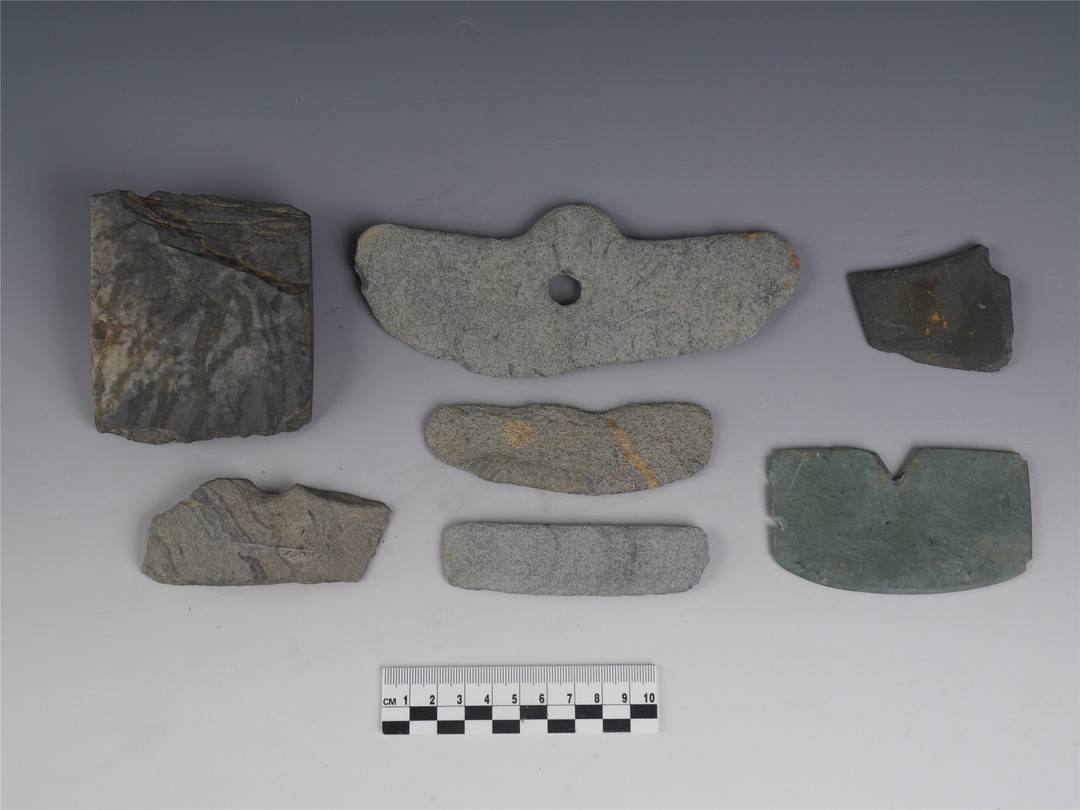
Unearthed more pottery slices and stone tools
There is also a canoe with 5.6 meters long
What kind of production tools do you use to cultivate this prehistoric rice field? It can be imagined is stone tools. According to Wang Yonglei, at the archeological excavation site of Shima Ancient Daita, a small amount of charcoal black pottery was found at the edge of the rice fields in the early paddy fields of Hemudu culture, which can be discerned with the mouth of the pottery. A small amount of pottery slices were unearthed in the edge of the paddy fields and ancient rivers in the late Dajia fields. During the Liangzhu Culture period, more pottery slices, stone artifacts, etc. were found in the edge of the rice fields and ancient river channels. The pottery included tripods, cans, pots, etc., and there were large number of fins and red pottery tanks. , 锛, litter, etc. A canoeing used as a canoe used to pad the wooden pads in the east of the 12th road. The bow and stern are incomplete. The remaining 5.6 meters, the widest 0.8 meters, and a thickness of about 3 cm. Talking about the significance of this beginning of the beginning of the ancient rice fields 6,700 years ago, Wang Yonglei said, "First of all, it shows that the rice -made agriculture is an important economic support from the period from the Hemu Culture to the Liangzhu culture period. The main food growth point of supporting many people, which provides extremely important information for the prehistoric socio -economic development and civilization process of the lower reaches of the Yangtze River. The highly developed wetland rice agricultural economy and production technology has spawned and promoted this region The process of social complexity and civilization has had an important impact on the unique ideas and ideology of this region. "
Liangzhu Cultural Tian Tian's abandoned canoe
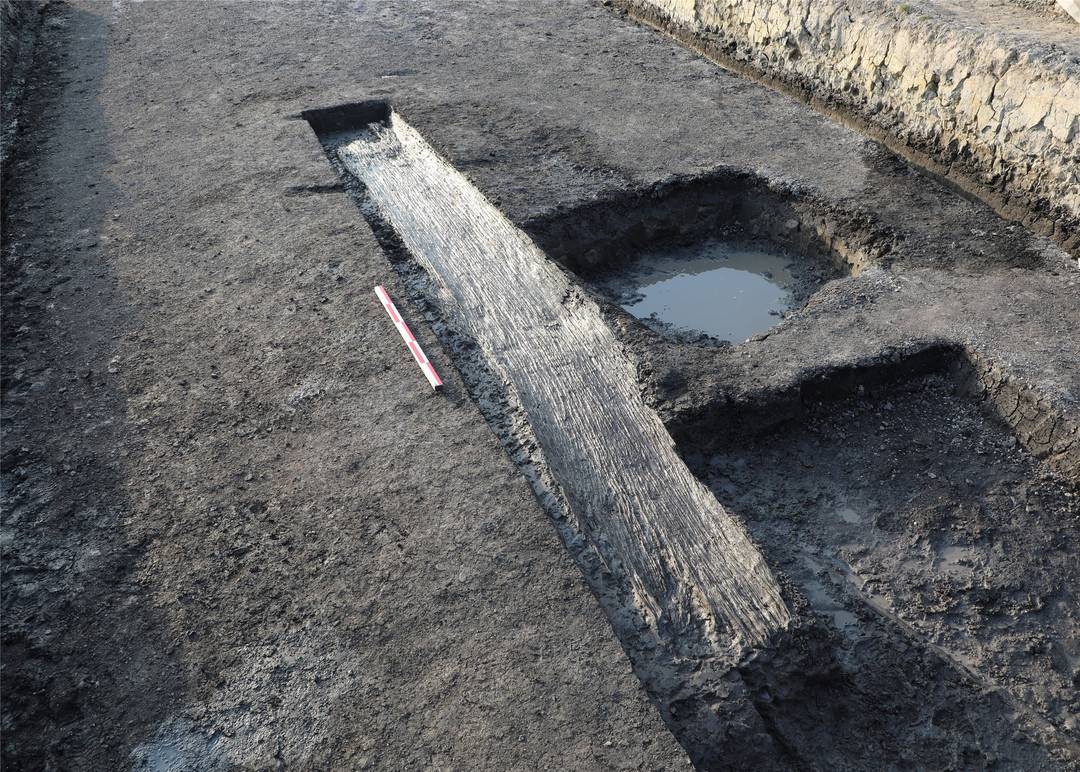
The site of the ancient Daoda site built the site park
It is currently being planned
The revealing of a mystery is always the development of another puzzle. The scope of the ancient rice fields of Shi Yan is so large, what are the people who grow rice? Where do you live again? Is this a "state -owned farm"?
"We found five prehistoric villages in the area around Daitian in a square kilometer area. Of course, there may be other village sites, and we have not found it." Wang Yonglei speculated that more than 6,000 years ago, it was most likely that these people were here here. Hard work on the film. "Shi Yan rice fields in the early days of Hemudu culture may be planted by the ancestors of the Tianluo Mountain Site. However, there are currently no direct evidence and many unsolved mysteries."
The archeological excavation of the site has ended. Wang Yonglei and colleagues will focus on organizing the archeological materials collected. Then through multi -disciplinary cooperation, further research. Wang Yonglei revealed that the construction of the site of the Square Daeian Site is currently planned.
Show Shihuan Archaeological Team in 2021 (the front row of the photo is Wang Yonglei) Wang Yonglei)
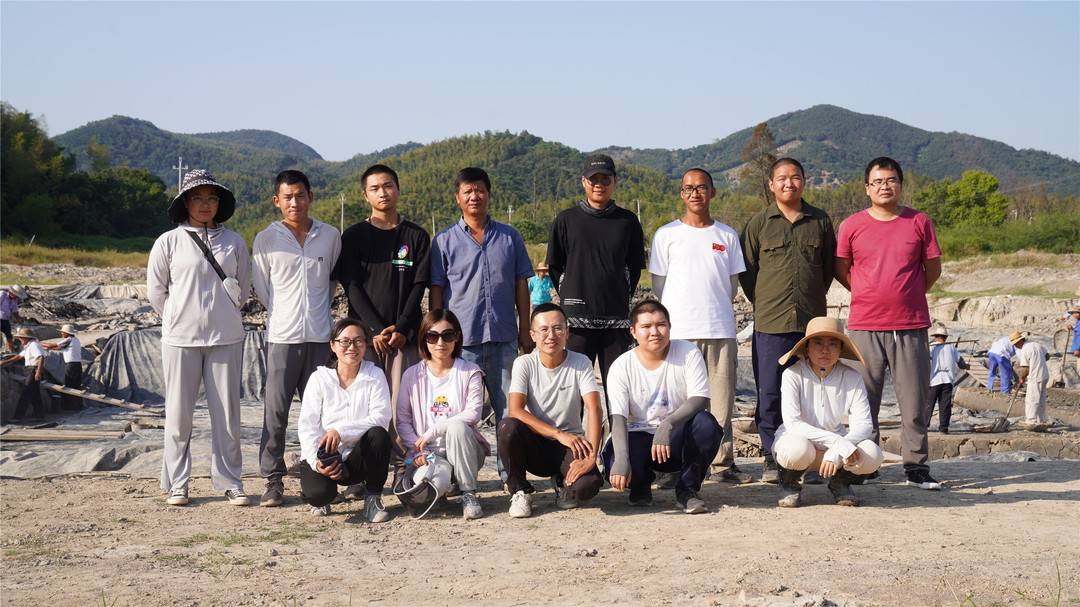
Liangzhu can take the lead in entering the level of national civilization on the land of China
It is inseparable from the development of agriculture supporting it
On March 28, Wang Yonglei, the head of the archeological excavation project of the Yuyao Square site in Zhejiang, Wang Yonglei, a librarian of the Zhejiang Provincial Institute of Cultural Relics and Archeology, accepted an exclusive interview with the cover journalist.
Cover news: What difficulties did you encounter during the excavation of Shi Yan's site? How is it solved?
Wang Wenlei: First of all, when I was excavated at the beginning, people were very nervous. In fact, the entire archeological world is generally lacking. At the beginning, Shi Ji archeological excavation was excavated, only two of me and I. Later, we came to some university interns and local literary and cultural institutions, such as several of the Humatu Site Museums of Yuyao City, plus three colleagues in our unit, formed a team of more than 20 people to dig for a year Half time. The second difficult problem is that that place is relatively low, and it is easy to accumulate water. Archaeological plains such as Zhejiang are often drowned by water. Drunk by water will affect time. This has a significant impact on our work. Because a archeological project often has a deadline, it will not endlessly. Last year, Yu Yao scraped the typhoon, and the entire pump and wires on our archeological site were drowned. The rural roads from Shizhen Village to the provincial road were drowned. We stopped working for half a month. There are also high temperatures like summer. In the field, we can only take a shade net or shorten the working hours appropriately.
Cover news: Starting in September 2020, the Zhejiang Provincial Institute of Cultural Relics and Archeology, Ningbo City Institute of Cultural Heritage Management, and the Humadu Site Museum of Yuyao have jointly conducted archeological excavations. What are the progress and new discoveries of the archeological mining and research of Shi Yan Site?
Wang Yonglei: In 2021, a large area was mainly excavated in the West District of Gu Daitian, revealing a piece of early rice fields in Hemudu culture in the late rice fields in the early days of Hemu Culture, confirming a rivers in Liangzhu Culture, and cleaning up a group of Hemudu culture to the ash pit from the Ming and Qing Dynasties to the Ming and Qing Dynasties. Essence The most important discovery is to determine the early rice fields of Hemudu Culture. During this period, there were artificially paved fields in rice fields; the exposed Hemudu culture late paddy field structure has been clear. During the Liangzhu Cultural period, the rice fields, on the west side of the mountain area, confirmed a north -south ancient river channel, and a wooden drainage facility was found at the edge of the river.
Cover news: Popularity is relatively small about farmland archeology. Please help us introduce it?
Wang Yonglei: In our country, the most current archeological excavations are settlement sites, such as the former villages, and ancient tombs, which are relatively few archeology in ancient rice fields. The beginning of the Chinese Farmland Archeology was 1992-1995. The Suzhou Grass Shoes Mountain site discovered by Japanese archeologists and archaeologists in Jiangsu first discovered the late Majiabang culture in the late period, 6000 years ago. Some of the rice field archeology, there are more important things from 2009 to 2011, our unit (Zhejiang Provincial Institute of Cultural Relics and Archeology) Ding Pin found the rice fields during the Liangzhu Culture Period in the Maoshan site of Yuhang, Zhejiang. Shi Yan's rice fields are almost the same. Of course, this is a very important breakthrough. Shi Yan actually discovered the three cultural periods this time: the early days of Hemudu culture, the late period of Hemudu culture to the Liangzhu culture period. The discovery of the early rice fields of Hemudu Culture, these three periods, this series is very complete and a breakthrough in our, and then it is well preserved and long -sported, especially in Liangzhu period. Essence Cover news: The discovery of ancient rice fields and tombs or sacrifice pits is that the ancient rice fields are not dealing with death or sacrifice, but are related to daily life, and they are closely linked to people's production and life. Moreover, rice and rice are the basic and core foods for residents of the Yangtze River Basin in China. The ancient rice field site of Yuyao, Zhejiang may understand the daily life of the ancestors of the Yangtze River Basin for us.
Wang Yonglei: Indeed. One of the important significance of Dao Tian Archeology is that in the past, we studying the level of agricultural development was through researching agricultural production tools or studying crops from villages. Such materials were very scattered, and Daitian was very intuitive and direct research on the development of agricultural development. s material. Although there is almost no excavation of rice in the rice fields, because most of them are preserved are rice shells, the rice grains of rice are small ear shafts connected to the place below, and some rice leaves. There are still many things in the rice fields, and they are all good research materials.
Cover news: You have also participated in the archeological excavation of the Liangzhu site. In your opinion, what is the relationship between the ancient rice field and the ancient city of Liangzhu?
Wang Yonglei: Although Yu Yao Shizheng has developed rice fields during the Liangzhu period, it is not the core area of Liangzhu civilization. The ancient city of Liangzhu was in Hangzhou and was the capital of the ancient country of Liangzhu at that time. Shi Yan was in a remote countryside. At that time, Liangzhu could develop into the national level of civilization. I think it is also related to many similar rice fields in Liangzhu in ancient China that can provide a lot of remaining food to provide people in the ancient city of Liangzhu. In other words, the economic foundation at that time could already support a large part of the people who did not engage in agricultural production.
I also participated in archeological excavations in the ancient city of Liangzhu. We found a large amount of carbonized rice near the Liangzhu Palace area. It is speculated that it is a granary of Liangzhu, and it may be hidden with 200,000 kilograms of rice. But I don't know why, I lost the fire and burned. At that time Liangzhu, where did the grain storage so many foods come from? There are no rice fields in the ancient city of Liangzhu, and there are not many rice fields nearby. Of course, there will be paddy fields, like Maoshan to Liangzhu Ancient City about more than ten kilometers. Regarding the paddy fields of the Maoshan site, Mr. Yan Wenming, a well -known archeologist at first, said that Maoshan rice fields were "state -owned farms" of Liangzhu. In this sense, Shi Yan is very far from Liangzhu, and this place has developed a very high -level rice field, which also shows that the region in the Liangzhu period is highly developed. In other words, the reason why Liangzhu can take the lead in entering the level of national civilization in China, which is inseparable from the development of agricultural development.
- END -
In the first round, 371 million viewers were broadcast, and "The World" won the "annual national drama" award

Jimu Journalist Zhang CongIn the first half of 2022, which Chinese drama is the ho...
The monuments are looking for, and the strength of the historical context moves forward
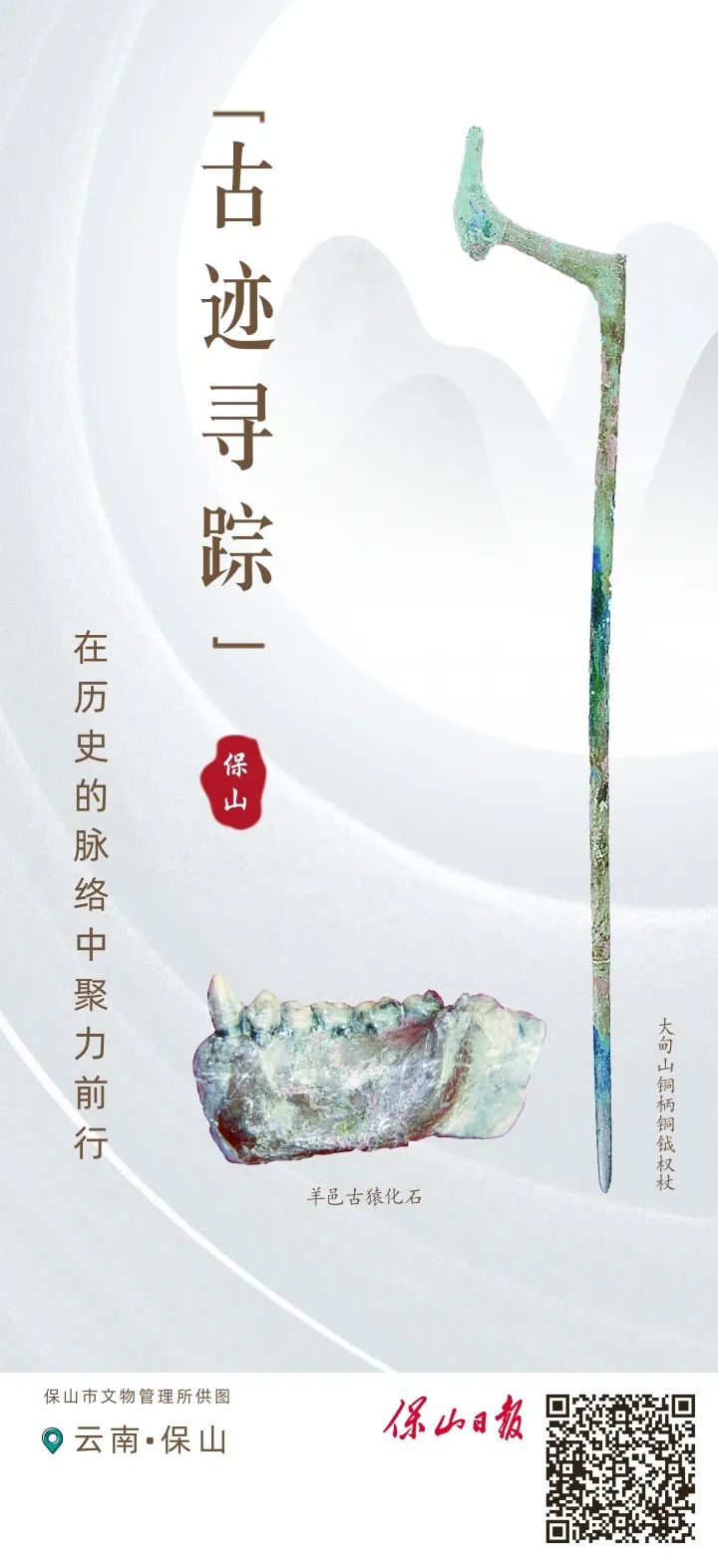
notOpen -columnBaoshan is one of the origin of ancient human beings. A cultural ci...